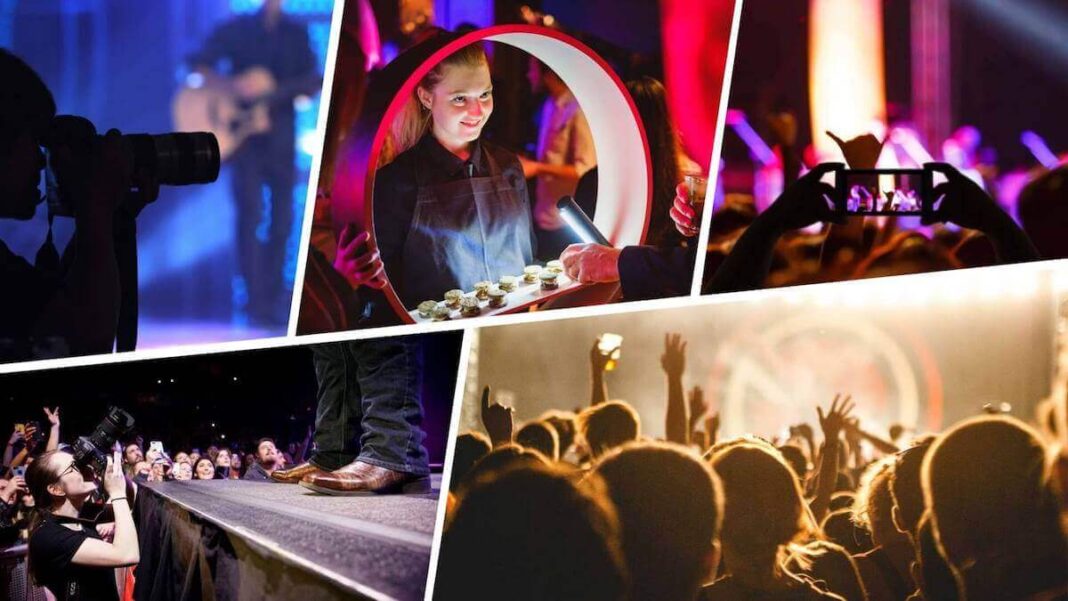Event photography is an art that goes beyond snapping pictures. It’s about capturing emotions, interactions, and unforgettable moments. Whether it’s a corporate gathering, wedding, or live concert, event photographers play a critical role in documenting experiences that people will cherish for years. But what exactly does event photography involve, and how do you ensure the best results? Let’s explore the ins and outs of this dynamic field.
What Is Event Photography?
Event photography involves taking photographs at various types of events to capture the essence and energy of the occasion. From corporate conferences to personal celebrations, the goal is to document important moments, often without interrupting the natural flow of the event. A successful event photographer blends into the background while managing to capture every significant detail.
Why Event Photography Matters?
Every event, big or small, is unique. Photos from these events serve as a lasting memory for attendees and help tell the story of the day. For businesses, event photography provides professional documentation that can be used in marketing materials, on websites, or for internal records. For personal events like weddings or birthdays, these photos become cherished keepsakes that tell the story of the day’s highlights.
Types of Events That Require Photography
There’s a wide range of events that benefit from professional photography, including:
- Corporate Events: Conferences, seminars, product launches, and company parties.
- Weddings: The ultimate personal celebration, requiring full-day coverage.
- Concerts and Festivals: Live music, performances, and large gatherings.
- Private Celebrations: Birthdays, anniversaries, and family reunions.
- Sports Events: Capturing action and team celebrations.
How to Choose the Right Event Photographer?
Selecting the right photographer is crucial for capturing your event’s best moments. Here’s what to consider:
- Experience: Does the photographer have experience in the specific type of event you’re hosting?
- Portfolio: Look at their previous work. Do the photos capture the energy and emotions of past events?
- Style: Make sure their style aligns with what you’re looking for—whether it’s candid, formal, or artistic.
- References and Reviews: Read feedback from past clients to gauge their reliability and professionalism.
Key Equipment for Event Photography
Event photography requires specific gear to handle different environments and lighting conditions. Essential equipment includes:
- Camera bodies: Full-frame DSLRs or mirrorless cameras for high-quality images.
- Lenses: Wide-angle lenses for group shots and telephoto lenses for capturing action from a distance.
- Lighting: External flash units or diffusers are necessary for low-light environments.
- Backup equipment: Extra batteries, memory cards, and even backup cameras to ensure nothing is missed due to equipment failure.
Pre-Event Planning: What You Need to Know
Before the event, photographers need to do some planning to ensure smooth coverage. This includes:
- Venue scouting: Visiting the venue beforehand to understand the layout, lighting, and key moments to capture.
- Creating a shot list: Working with the client to make a list of must-have shots, such as speakers, group photos, or key moments.
- Coordinating with event staff: Making sure the photographer is aware of the event schedule, key speakers, or any surprises planned.
Capturing Candid vs. Posed Shots
A good event photographer strikes a balance between candid and posed shots. Candid shots capture the natural energy and unscripted moments of the event, like guests laughing or chatting. Posed shots, on the other hand, are more structured and typically involve groups of people or key moments, such as awards being given or toasts being made.
Lighting Challenges in Event Photography
Events often present tricky lighting conditions, especially indoors or during evening functions. Event photographers must be skilled in adjusting their settings for low light, bright spotlights, or changing lighting situations. Using external flashes, reflectors, or even natural light when possible can help ensure every shot is clear and well-lit.
Editing and Post-Production
The work of an event photographer doesn’t stop after the event. Post-production is an essential part of delivering polished, high-quality images. This process may involve:
- Color correction: Adjusting exposure, contrast, and white balance for consistent tones.
- Cropping and framing: Enhancing composition and removing distractions from the edges of the frame.
- Retouching: Minor touch-ups like removing blemishes or unwanted objects in the background.
Event Photography Pricing
Event photography pricing can vary based on the type and length of the event, the photographer’s experience, and the final deliverables. Many photographers charge an hourly rate, with packages that include a certain number of photos and post-production work. Additional services, such as creating albums or prints, may come at an extra cost.
Tips for Hiring an Event Photographer
To ensure you hire the best photographer for your event, follow these tips:
- Start early: Good photographers book up quickly, so start your search well in advance.
- Set a budget: Be clear about your budget from the beginning, but remember that photography is often worth investing in.
- Communicate your vision: Share your goals and key moments with the photographer so they can align their work with your expectations.
- Ask about turnaround time: Get an estimate of how long it will take to receive your edited photos after the event.
Conclusion
Event photography is more than just taking pictures; it’s about capturing the moments, emotions, and atmosphere that make the event memorable. Whether you’re hosting a corporate event photography. Concert or wedding choosing the right photographer can significantly affect how the day is remembered. By planning ahead, communicating clearly, and selecting a photographer with the right skills and equipment, you can ensure that your event is captured in the best possible light.


